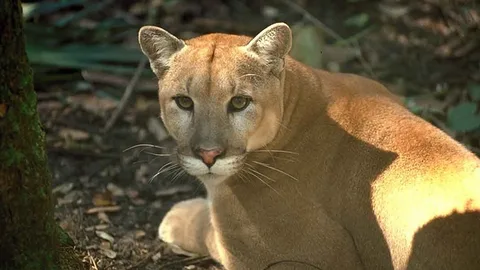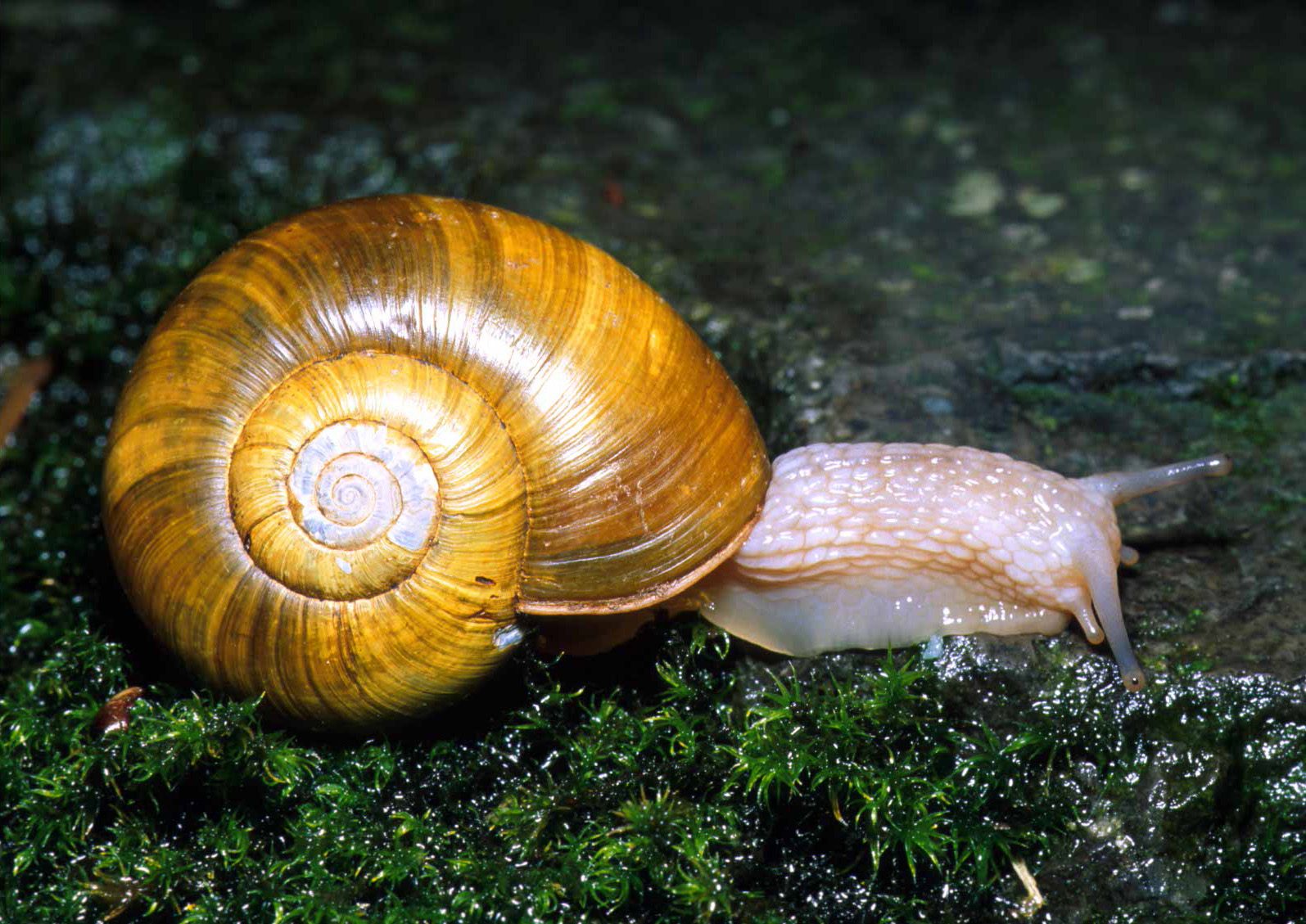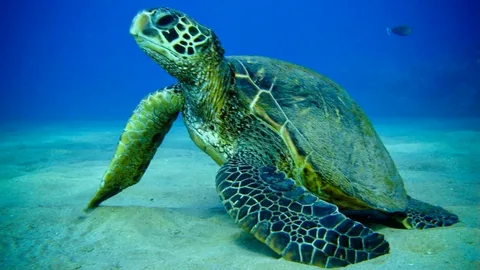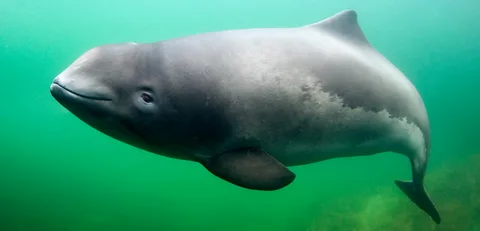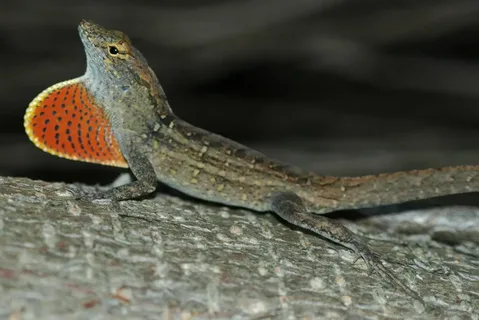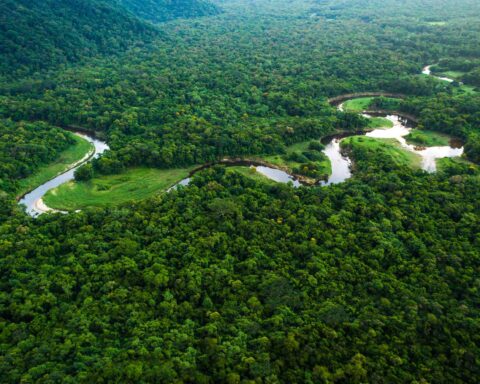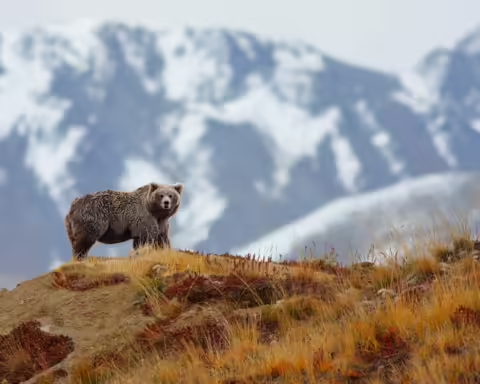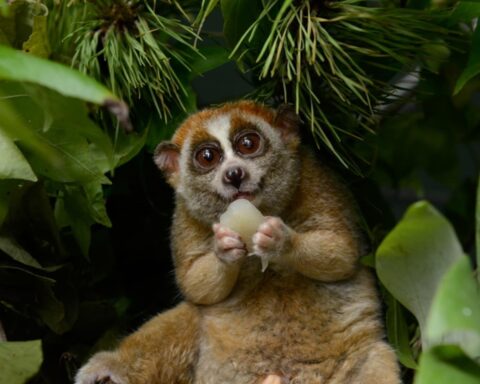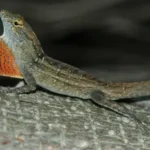Types of Animals in Florida
Mammals Native to Florida
The state of Florida is home to a diverse range of mammals, with species that are native to the region playing a crucial role in maintaining the balance of its ecosystems.
Some of the most iconic mammals native to Florida include the Florida Panther( Puma concolor catus ), a subspecies of cougar found only in south Florida, and the Florida Black Bear( Ursus americanus floridanus), a subspecies of black bear that is well adapted to living in Florida’s forests and swamps.
Bats are also an important part of Florida’s mammal population. With over 13 species found in the state, they play a vital role in pollination and seed dispersal.
Some other mammals native to Florida include:
- Manatees( Trichechus manatus ): Also known as sea cows, these large aquatic mammals are found in shallow waters throughout the state.
- Raccoons( Procyon lotor ): These small to medium-sized mammals are common in Florida’s forests and wetlands.
- Opossums(Didelphimorphia ): Found throughout the state, opossums are North America’s only marsupial mammal.
- Moles( Talpidae ): With several species found in Florida, moles play an important role in the state’s ecosystem by controlling insect populations.
These mammals contribute to the rich biodiversity of the state and are a vital part of Florida’s ecological heritage.
The continued conservation and preservation of these native mammal species is essential for maintaining the balance of Florida’s ecosystems, and efforts should be made to protect their habitats and prevent their extinction.
The Florida panther, a subspecies of cougar, is an endangered species found in south Florida.
- The Florida panther, a subspecies of cougar, is an endangered species found in south Florida.
- Also known as Puma concolor coryi, the Florida panther is the only native big cat to the state.
- This majestic creature is one of the most endangered animals in the United States, with only around 100 individuals remaining in the wild.
- The primary reason for its decline is habitat loss and fragmentation, mainly due to urbanization and agriculture.
- Historically, the Florida panther’s range spanned across central and southern Florida, but it has been largely reduced to the southwestern part of the state, particularly in the Collier and Lee counties.
- The main prey species of the Florida panther include white-tailed deer, bobcats, raccoons, opossums, and wild hogs.
- These cats are solitary animals and have a large home range, with males occupying up to 200 square miles compared to females’ smaller ranges of around 20-40 square miles.
- Florida panthers are skilled hunters, using stalking and ambushing tactics to catch their prey.
- Unfortunately, the Florida panther is threatened by various human activities, including vehicle collisions, habitat destruction, and poisoning from pesticides and rodenticides.
To mitigate these threats, conservation efforts have been implemented, such as:
- Creation of wildlife corridors to connect isolated habitats
- Establishment of protected areas, such as national parks and wildlife refuges
- Control of feral cats and other predators that compete with the Florida panther for resources
- Capture and relocation of individual panthers to increase population size and genetic diversity
Additionally, education and outreach programs have been implemented to raise awareness about the importance of conservation efforts and the need to protect this magnificent creature.
The Florida panther is an iconic symbol of the state’s natural heritage, and its survival is crucial for maintaining the balance of south Florida’s ecosystem.
Marine Life in Florida Waters
The coastal waters of Florida are home to a diverse array of marine life, including both native and non-native species. Among the most fascinating creatures found in these waters are those that call Florida their natural habitat.
Manatees, Trichechus manatus, are large, slow-moving aquatic mammals that can be found throughout Florida’s coastal waters. These gentle giants feed on seagrasses and can grow up to 13 feet in length.
Dolphins
are common visitors to Florida’s beaches and bays, with several species known to inhabit these waters, including Bottlenose Dolphins, Atlantic Spotted Dolphins, and Buck Toothed Bottlenose Dolphins.
Sea Turtles
are an iconic Florida marine species. Five species of sea turtles have been documented in Florida waters, including the Loggerhead Sea Turtle, Green Sea Turtle, Kemp’s Ridley Sea Turtle, Leatherback Sea Turtle, and Hawksbill Sea Turtle.
Fish
of all kinds are abundant in Florida waters. Some notable species include the Barracuda, Snook, Mullet, Silver Perch, and Lemonfish. In addition, numerous species of Shrimp, Crabs, and Oysters
can be found in Florida’s estuaries.
Coral
reefs are a crucial component of marine ecosystems in Florida waters. While some coral reef areas have been damaged due to pollution or disease, many other sites remain healthy and teeming with life. These coral reefs provide vital habitat for countless species, including Fish, Mollusks, and Crustaceans.
Marine Insects, such as Sea Butterflies, Butterflyfish, and Mantis Shrimp, are also present in Florida’s coastal waters. Each of these insects plays a vital role in the marine ecosystem, serving as both predators and prey for other creatures.
Mollusks
include various types of clams, scallops, whelks, conchs, abalone, octopus, squids, and nautiluses. Many mollusk species are vital food sources for birds, mammals, and fish.
In conclusion, Florida’s marine life encompasses a broad diversity of animals native to these waters, including Manatees, Dolphins, Sea Turtles, Fish, Shrimp, Crabs, and numerous other species.
References:
Florida is renowned for its diverse array of wildlife due to its unique geography and subtropical climate. The state’s position within the southeastern United States, adjacent to the Gulf of Mexico, allows it to serve as a crossroads between North America and South America.
This geographic location facilitates migration patterns among various animal species, making Florida an ideal habitat for numerous endemic and migratory creatures alike. In this context, we will explore some of the fascinating animals native to Florida, categorized by their respective habitats:
Terrestrial Animals
The diverse range of terrestrial animals in Florida includes both iconic and lesser-known species.
- Florida Panther: The Florida panther is a critically endangered subspecies of cougar that inhabits the south-central region of Florida. Its population remains fragile due to habitat loss and poaching, with conservation efforts focused on protecting its territory.
- Alligator: Found throughout Florida, alligators are one of the state’s most recognizable symbols. They can be spotted in freshwater wetlands, lakes, and even urban areas.
- Bobcat: With their distinctive black spots and adaptable nature, bobcats are widely distributed across Florida’s varied habitats, from forests to swamplands.
Aquatic Animals
The Gulf of Mexico and Atlantic Ocean provide a home for numerous marine species found along Florida’s coastlines.
- Dolphin: Bottlenose dolphins can be observed in the waters surrounding Florida, particularly around popular tourist destinations like Key West and Clearwater Beach.
- Manatees are large aquatic mammals that inhabit shallow waters throughout Florida. They often congregate near power plant outflows and are a popular sight among locals and tourists alike.</strong-manatee<>
- Sea Turtle: Sea turtles, such as the loggerhead sea turtle, can be spotted nesting on Florida’s beaches or swimming in its coastal waters.
Airborne Animals
In addition to terrestrial and aquatic species, Florida is also home to a diverse array of airborne creatures, including birds and insects.
- Bald Eagle: As an iconic symbol of American strength, the bald eagle can be found along Florida’s Gulf Coast, particularly near the Everglades region. Conservation efforts have helped increase their population over the years.
- Osprey: These fish-eating birds are commonly seen in coastal areas, perching on power lines or hovering above the water with their distinctive diving technique.
This is merely a glimpse into the incredible diversity of animals native to Florida. The state’s unique combination of geography, climate, and habitat has created an ideal environment for a vast array of wildlife species to thrive and make this place one of the most fascinating regions in the world for nature enthusiasts.
Manatees inhabit shallow waters and rivers, feeding on sea grass.
Manatees are large, slow-moving aquatic mammals that inhabit shallow waters and rivers in Florida. They can be found in coastal areas, estuaries, and freshwater springs throughout the state.
One of the primary reasons manatees are attracted to these shallow waters is the abundance of sea grass, which makes up a significant portion of their diet. Sea grass provides essential nutrients for the manatee’s survival, and they can consume up to 10-15% of their body weight in sea grass every day.
Here are some interesting facts about manatees:
- Manatees are also known as “sea cows” due to their grazing habits and slow movement through the water.
- They can grow up to 13 feet (4 meters) in length and weigh up to 1,300 pounds (590 kilograms), making them one of the largest aquatic mammals in Florida.
- Manatees have a thick layer of fat called blubber that helps keep them warm in cold water and protects them from injuries.
- They are solitary animals but will sometimes gather in large groups during mating season or when seeking food sources.
- Manatees can live up to 60 years in the wild, which is remarkable for an animal of their size.
The manatee’s habitat plays a crucial role in maintaining their population. Human activities such as coastal development and pollution have impacted their environment and led to a decline in sea grass beds. Efforts are being made to protect these areas and ensure the continued survival of manatees in Florida.
Dolphins are common in the Atlantic Ocean and Gulf of Mexico.
The Atlantic Ocean is home to an incredible array of marine life, but one of its most iconic inhabitants is undoubtedly the dolphin.
These intelligent, social creatures can be found in the warm waters of the Atlantic, where they spend their days playing, hunting, and interacting with each other in complex ways.
The Gulf of Mexico, which borders the southeastern United States, including Florida, is another hotspot for dolphin sightings.
In fact, Florida is one of the best places on earth to see dolphins in their natural habitat.
With its extensive coastline and numerous beaches, bays, and estuaries, the Sunshine State offers an ideal environment for these marine mammals to thrive.
Dolphins are found throughout Florida’s waters, from the Atlantic coast to the Gulf of Mexico, and they can even be spotted in the state’s numerous rivers and lakes.
The most common species of dolphin found in Florida is the bottlenose dolphin (Tursiops truncatus), which is a medium-sized, gray-colored dolphin that can grow up to 12 feet in length.
Other species of dolphins, such as the spinner dolphin (Stenella longirostris) and the rough-toothed dolphin (Steno bredanensis), have also been spotted in Florida waters.
Dolphins are incredibly intelligent creatures that live in social groups, known as pods, which can range in size from a few individuals to hundreds of dolphins.
Within these pods, dolphins communicate with each other using a variety of clicks, whistles, and body language, allowing them to coordinate their behavior and work together to hunt for food.
In Florida’s waters, dolphins feed on a variety of prey, including fish, squid, crustaceans, and even small marine mammals like porpoises.
Dolphins have also been observed exhibiting complex behaviors such as hunting cooperatively, playing with seaweed, and even interacting with humans in playful ways.
The state of Florida is home to a diverse range of wildlife, with many species that are found nowhere else on Earth. The subtropical climate and abundant waterways make it an ideal place for animals to thrive.
One of the most iconic native Floridian animals is the panther. The Florida panther is a subspecies of cougar, and its population is estimated to be around 100 individuals in the wild. They are solitary animals and have large home ranges that they mark with scent to keep other panthers away.
Florida’s panther population is threatened by habitat loss and fragmentation due to urban development and agriculture. The Florida Fish and Wildlife Conservation Commission has implemented conservation efforts to protect the panther, including habitat preservation and a captive breeding program.
Another important native species in Florida is the Key deer. This tiny subspecies of white-tailed deer is found only on the Keys and is the smallest subspecies in North America. They are herbivores and feed on leaves, fruits, and flowers.
The Key deer is threatened by habitat loss due to sea-level rise and invasive species like the Burmese python and the Nile monitor lizard. The National Park Service has implemented conservation efforts to protect the deer, including removing invasive species from the Keys.
Florida’s Everglades ecosystem supports a unique range of wildlife that can be found nowhere else on Earth. The Everglades is home to numerous bird species, including the roseate spoonbill and the white pelican. It also provides habitat for large reptiles like the American alligator and the Florida crocodile.
However, many of these species face threats from human activities such as development and pollution. The Everglades ecosystem has been altered by a combination of factors, including the construction of canals, dams, and water-control devices.
The Florida Fish and Wildlife Conservation Commission, along with other organizations, is working to protect the Everglades ecosystem and its inhabitants through habitat restoration and conservation efforts.
Habitats Supporting Various Fauna
Freshwater Ecosystems
The freshwater ecosystems in Florida are home to a diverse range of animals that have adapted to the state’s unique geography and climate. One of the most well-known types of freshwater ecosystems in Florida is the spring-fed lake or river, which can support a variety of aquatic life.
Some examples of animals native to these environments include the largemouth bass, bluegill, and redear sunfish, all of which are popular game fish. Other species such as the American eel and the Gulf toadfish can also be found in freshwater habitats around Florida.
Florida’s freshwater ecosystems are also home to a variety of reptiles, including turtles and snakes. The southern map turtle is native to the state’s freshwater lakes and rivers, while the diamondback terrapin is commonly found in coastal areas that have brackish water.
The alligator snapper turtle is another species that can be found in Florida’s freshwater habitats, and it has a distinctive large mouth with powerful jaws. The Florida green snake, a non-venomous species, is also native to the state and often inhabits freshwater areas such as marshes and swamps.
Florida’s wetlands are also an important habitat for birds, including herons and egrets. The American coot and the ringed teal are both native to the state and can be seen in freshwater habitats during different times of the year.
The Florida panther is a large cat that roams the state’s forests, but it has also been spotted near freshwater lakes and rivers. Although this subspecies of cougar is endangered, conservation efforts are underway to protect its habitat and help increase its numbers.
Finally, one of the most iconic animals in Florida is the manatee, which inhabits the state’s warm waters, including freshwater lakes and rivers. Manatees can grow up to 13 feet long and weigh over a thousand pounds, making them one of the largest land mammals native to North America.
Each of these species has its own unique characteristics and adaptations that allow it to thrive in Florida’s diverse freshwater ecosystems, which provide a critical source of food, shelter, and habitat for countless animals and plants throughout the state.
The Everglades is a vast wetland and mangrove forest where various animal species live, including alligators, snakes, and numerous bird species.
The Everglades is a unique and fascinating ecosystem located in southern Florida, USA. It covers an area of approximately 7,700 square miles (20,000 km²) and is considered one of the most extensive mangrove forests in the world.
The Everglades provides a habitat for over 350 species of birds, including herons, egrets, ospreys, and ibises. The wetlands are also home to numerous fish species, such as tarpon, snook, and largemouth bass. Alligators, crocodiles, snakes, and other reptiles inhabit the Everglades, while Florida panthers, white-tailed deer, and wild boars roam the forest.
The Everglades is often referred to as a “river of grass,” due to its slow-moving waters and extensive network of sawgrass marshes. The ecosystem relies on a delicate balance between freshwater from the Kissimmee River and Lake Okeechobee, and saltwater from the Gulf of Mexico and Atlantic Ocean.
The mangrove forests of the Everglades are comprised of three main species: black mangrove (Avicennia germinans), red mangrove (Rhizophora mangle), and white mangrove (Laguncularia racemosa). These trees play a crucial role in stabilizing the shoreline, providing habitat for marine animals, and protecting against storm surges.
The Everglades has been designated as an International Biosphere Reserve and a UNESCO World Heritage Site. It is also protected by the Everglades National Park, which was established in 1947 to conserve this unique ecosystem. However, despite these efforts, the Everglades continues to face threats from human activities such as urbanization, agriculture, and pollution.
To mitigate these impacts, conservation efforts focus on restoring natural water flows, reducing pollutants, and reintroducing native species that have been lost due to habitat destruction. By working together, we can help preserve the integrity of this vital ecosystem for future generations to enjoy.
Marine Animals Found in Florida’s Coastal Zone
Sea Turtles in Florida
Florida is home to a diverse range of wildlife, including several species of sea turtles. These magnificent creatures have been nesting on the state’s beaches for centuries.
The four main species of sea turtles found in Florida are the loggerhead, green turtle, leatherback, and Kemp’s ridley. The loggerhead sea turtle is the most abundant species and can be found throughout the state’s waters. They are a medium-sized turtle with a distinctive large head and powerful jaws.
Green turtles, on the other hand, prefer to live in more subtropical and tropical waters and are less common in Florida compared to loggerheads. However, they can still be found nesting on certain beaches along the eastern coast of the state.
Leatherback sea turtles are the largest species of turtle and are known for their unique, leathery skin. They prefer to migrate long distances across the ocean and are a rare sight in Florida’s waters. However, they do occasionally nest on the state’s beaches.
Kemp’s ridley sea turtles are the smallest species of sea turtle and are also one of the most endangered. They can be found nesting on the Gulf Coast of Florida during the summer months. These tiny turtles are only about 20-30 inches long and weigh around 35-45 pounds.
Sea turtles play a vital role in maintaining the balance of Florida’s ecosystem. As they feed on jellyfish, seagrass, and other marine life, they help to keep these populations under control. This, in turn, prevents overgrazing and keeps the ecosystem healthy.
Nesting sites for sea turtles are typically located in areas with sandy beaches, as this is where females lay their eggs. These nesting sites need to be protected from human development, erosion, and other threats that can harm these vulnerable creatures.
Florida has implemented various measures to protect its sea turtle population. For example, many state parks have designated nesting areas for turtles and restrict access to humans during certain times of the year. This helps ensure that turtle eggs are not disturbed or destroyed.
The state also provides education programs to raise awareness about the importance of protecting sea turtles. These programs help to promote responsible behavior among beachgoers, such as turning off lights at night and not disturbing nesting sites.
Overall, Florida is a critical habitat for many species of sea turtles, and it’s essential that we continue to take steps to protect these incredible creatures. By doing so, we can ensure their populations remain healthy and thriving for generations to come.
The state of Florida is known for its rich biodiversity and is home to a wide variety of unique animal species that can be found nowhere else in the world.
Florida’s subtropical climate, with its mild winters and hot humid summers, supports a vast array of wildlife including mammals, birds, reptiles, amphibians, and fish.
One of the most iconic animals native to Florida is the American alligator. These large reptiles are found throughout the state and play a crucial role in maintaining the ecosystem balance.
Alligators inhabit freshwater environments such as lakes, rivers, and swamps and feed on a variety of prey including fish, snails, and small mammals.
Another native species is the Florida panther, a subspecies of cougar that is found only in south Florida. These big cats are endangered due to habitat loss and poaching.
The Florida panther is a majestic animal with a tawny coat and a distinctive black stripe running along its back. They are solitary animals and primarily feed on white-tailed deer, small mammals, and birds.
Birds are abundant in Florida, with over 500 species documented throughout the state. Some of the most iconic native bird species include the sandhill crane, the roseate spoonbill, and the bald eagle.
The sandhill crane is a majestic bird that migrates to Florida from Canada and the Arctic tundra each year. They are known for their striking black and white feathers and distinctive calls.
The roseate spoonbill is another iconic bird species found in Florida’s wetlands. These birds have bright pink feathers on their faces and distinctive spoon-shaped bills, which they use to feed on small fish and crustaceans.
Beyond the American alligator and Florida panther, other native mammals include the Key deer, which is found only in the Keys region of south Florida, and the West Indian manatee, a large aquatic mammal that inhabits freshwater and saltwater environments throughout the state.
The Key deer is one of the smallest subspecies of white-tailed deer and has a distinctive spotted coat. They are found primarily on Big Pine Key and No Name Key in Monroe County.
Finally, the West Indian manatee is an iconic aquatic mammal that can be found throughout Florida’s freshwater and saltwater environments. These large mammals feed on seagrass, algae, and other aquatic plants.
The state of Florida has a rich cultural heritage related to its native animals, with many indigenous communities having traditional knowledge about the wildlife that inhabits their lands.
Loggerhead sea turtles nest on beaches.
The Loggerhead sea turtle is a large reptile that inhabits the coastal regions of the Atlantic Ocean, including the southeastern United States. In particular, they are found nesting on beaches along the coast of Florida, where they come ashore to lay their eggs.
Nesting usually occurs at night when it’s cooler and calmer, with the turtles making their way up onto the beach in search of a suitable location for laying their eggs. The females use their keen sense of smell and visual cues to choose an area with the right combination of sand moisture and temperature, as well as protection from predators.
The beaches chosen by Loggerheads are often those with gently sloping gradients and well-drained sands that allow the turtle’s egg-laying process to be successful. This is why nesting sites are typically located on east- or west-facing beaches with minimal vegetation and few obstacles for the turtles to navigate.
After a female Loggerhead has completed her nesting process, she will cover her eggs with sand and then leave them undisturbed until they hatch several weeks later. The incubation period can last anywhere from 45 to 67 days, depending on environmental factors such as temperature and humidity.
During this time, the eggs are vulnerable to predators like raccoons, coyotes, and birds, which can dig up or eat them before they have a chance to hatch. However, some of these nests do survive, producing hatchlings that emerge from their shells, digging their way out into the sand using specialized flippers.
The tiny Loggerhead sea turtles will then make their way down to the ocean, often under the cover of darkness or in early morning hours when it’s safer. This is a critical moment in their life cycle as they must reach the water before predators catch up with them and pose a threat to their survival.
Throughout the summer months, many juvenile Loggerheads can be seen swimming offshore in groups, feeding on small crustaceans like jellyfish or sea cucumbers. These young turtles are an important component of marine ecosystems as they help maintain the balance between herbivorous and carnivorous species within coastal waters.
Green sea turtles are known for feeding in shallow waters.
The green sea turtle is one of the most recognizable species of sea turtles found in Florida’s shallow waters.
These incredible creatures can be seen swimming through the calm, crystal-clear waters of the state’s coastline and mangrove forests, feeding on a variety of marine plants and animals that are abundant in these areas.
One of the reasons why green sea turtles prefer shallow waters is because it provides them with access to their primary food sources, including seagrass, algae, and jellyfish.
In Florida, green sea turtles have been known to feed on species like shoal grass (Halophila decipiens) and manatee grass (Syringodium filiforme), which are both common in the state’s shallow waters.
These feeding grounds provide a vital link between the marine ecosystem and the turtles’ need for nutrition, as they rely on these plants to sustain themselves throughout the year.
As green sea turtles feed in these areas, they play an essential role in maintaining the balance of the ecosystem by controlling algae growth and preventing overgrazing, which can have a negative impact on the delicate balance of marine life.
In addition to their feeding habits, green sea turtles also engage in important behaviors such as nesting and mating, which contribute significantly to the state’s biodiversity and conservation efforts.
The protection of green sea turtles in Florida is crucial for maintaining the health and integrity of its ecosystem, and conservation programs are in place to ensure their continued well-being and survival.
The state of Florida is home to a diverse array of wildlife, with many species found nowhere else on Earth. This is due in part to its unique geography, which includes the Everglades – the largest subtropical wilderness in the United States.
The Everglades National Park is a critical habitat for many animals native to Florida, including the American alligator and the Florida panther. The alligator is an apex predator found throughout the state’s freshwater and brackish wetlands, while the Florida panther is a subspecies of cougar that is endangered due to habitat loss and fragmentation.
Other large mammals found in Florida include black bears, white-tailed deer, and wild boars. The black bear is an opportunistic omnivore that inhabits a wide range of habitats, from forests to wetlands. White-tailed deer are common in the state’s forests and grasslands, while wild boars have been introduced to the area through human activity.
Florida is also home to numerous bird species, including birds of prey such as bald eagles and osprey. The American white ibis and the wood stork are two bird species that are listed on the Endangered Species List due to habitat loss and degradation in Florida.
The state’s freshwater fish population includes largemouth bass, bluegill, and catfish, which are all popular game fish among anglers. In addition, Florida’s coastal waters are home to numerous marine species, including tarpon, snook, and red drum.
In terms of reptiles and amphibians, the green anole is a common lizard found throughout Florida, while the American green treefrog is a widespread frog species in the state’s wetlands. The eastern diamondback rattlesnake and the cottonmouth are two venomous snakes that inhabit different parts of the state.
The coral reefs off the coast of Florida are home to numerous fish and invertebrate species, including tropical fish, sea turtles, and coral.
Dolphins and Porpoises Found in Florida Waters
The waters off the coast of Florida are home to a variety of marine mammals, including dolphins and porpoises. These cetaceans can be found in the oceanic and brackish waters surrounding the state, particularly in areas with abundant fish populations.
There are two main species of dolphins native to Florida: the Bottlenose Dolphin
(Tursiops truncatus) and the Stripped Dolphin
(Stenella coeruleoalba). The Bottlenose Dolphin is one of the most common and widespread dolphin species in the world, while the Striped Dolphin is less frequently seen in Florida waters.
The Pilot Whale, which belongs to the same family as dolphins, has also been spotted in Florida’s offshore waters. However, it is not a native resident of the region and is more often found near the surface, where it feeds on deep-sea fish and squid.
Porpoises, on the other hand, are less common in Florida waters than dolphins. There is only one species of porpoise native to the Atlantic Ocean off the coast of North America: the Guarapo or Caribbean Porpoise
(Phocoena dioptrica). However, this species is extremely rare in Florida and is seldom spotted by fishermen or tourists.
Taxonomy and Classification
- Dolphins belong to the family Delphinidae, while porpoises belong to the family Phocoenidae.
- The order Cetacea includes both dolphins and porpoises, as well as whales.
Ecological Role
- Dolphins play a crucial role in maintaining the balance of marine ecosystems in Florida waters.
- They feed on fish populations that might otherwise become too dense and deplete their food sources.
Conservation Status: Both dolphins and porpoises are protected under the Marine Mammal Protection Act (MMPA), which prohibits harming, harassing, or hunting these marine mammals in the wild. Additionally, many dolphin species, including those found in Florida waters, are listed as Vulnerable
or Endangered
on the IUCN Red List due to threats such as habitat degradation, entanglement in fishing gear, and noise pollution from human activities.
Florida’s marine ecosystem is an important environment for these cetaceans, providing them with a place to feed, breed, and give birth. Therefore, conservation efforts should be directed towards preserving the health of the oceanic and brackish waters surrounding the state to ensure the continued well-being and survival of dolphins and porpoises in Florida waters.
The bottlenose dolphin is one of the most common species in these waters, frequently interacting with humans.
The Bottlenose Dolphin (Tursiops truncatus) is one of the most abundant and widespread dolphin species found in the waters around Florida. They are highly social animals that frequently interact with humans, often swimming close to boats and shorelines.
The Bottlenose Dolphin is known for its distinctive rounded forehead, or “melon,” which it uses to produce high-frequency clicks that bounce off objects in the water, allowing it to navigate and hunt. These clicks are beyond human hearing, but they can be detected with specialized equipment.
In Florida, Bottlenose Dolphins can be found in a variety of habitats, from shallow bays and estuaries to deeper ocean waters. They are often associated with fish schools and other marine animals, such as manatees and sea turtles.
One of the most fascinating aspects of Bottlenose Dolphin behavior is their ability to form complex social groups. These groups, known as “pods,” can range in size from a few individuals to hundreds of dolphins. Within these pods, dolphins have been observed exhibiting cooperative behavior, such as hunting and feeding together.
Dolphins are also known for their intelligence and adaptability. In Florida, they have been observed using tools, such as sponges, to help them forage for food. They have also been seen modifying their behavior in response to changes in the environment, such as shifting their hunting grounds in response to fish migrations.
The Bottlenose Dolphin is protected by laws and regulations aimed at preserving their populations and preventing harm. In Florida, it is illegal to harass or disturb dolphins, and human activities that could impact their habitats or behaviors are carefully monitored and regulated.
Overall, the Bottlenose Dolphin is an iconic species in Florida’s marine ecosystem, playing a vital role in maintaining the balance of these waters. Their intelligence, social behavior, and adaptability make them fascinating animals to study and observe, and efforts to protect and conserve their populations are essential for preserving the health of our oceans.
Animals That Have Adapted to Human Habitats
Raccoons and Opossums in Urban Areas
Urban areas in Florida have become an unlikely home for two fascinating animals: Raccoons and Opossums.
The Raccoon (Procyon lotor) is a common sight in urban areas across Florida, particularly around residential neighborhoods with ample food sources. Adaptable
and intelligent, raccoons have thrived in human-dominated landscapes by exploiting garbage, pet food, and other human-provided nutrients.
With their dexterous hands and keen sense of smell, raccoons are expert foragers. They can easily raid trash cans, pet doors, and even garden beds to obtain a meal. This omnivorous diet allows them to survive in a wide range of environments, from the city’s concrete jungle to its surrounding natural areas.
Opossums (Didelphimorphia), on the other hand, are often misunderstood creatures. While they may appear harmless, opossums play an essential role in maintaining urban ecosystems. These small marsupials feed on insects, slugs, snails, and even small snakes – all of which can be pests to human interests.
Opossums are also notable for their ability to immunize themselves against certain diseases by “playing dead,” a behavior known as thanatosis or death feigning. This defense mechanism protects them from potential predators, such as coyotes or bobcats, which might see the opossum’s limp body as an easy meal.
While both raccoons and opossums have adapted to living alongside humans in urban areas, their presence can sometimes lead to conflicts with residents. However, it is essential to remember that these animals are native to Florida and have evolved over time to thrive within their environments.
Here are some key differences between raccoons and opossums:
- Raccoon- larger, with a distinctive black “mask” around its eyes; omnivorous diet that includes fruits, vegetables, nuts, insects, and small animals.
- Opossum – smaller, with a grayish-white coat and prehensile tail; primarily insectivorous diet that includes slugs, snails, insects, and other invertebrates.
To peacefully coexist with these fascinating creatures, residents can take simple steps like securing trash cans, removing food sources, and creating opossum-friendly habitats through garden design. By doing so, we can appreciate the beauty and importance of raccoons and opossums in our urban ecosystems.
Raccoons and opossums are often seen rummaging through trash cans in urban areas of Florida.
Raccoons and opossums are two of the most common wildlife species found in urban areas of Florida, particularly when it comes to rummaging through trash cans.
This is not surprising, given that both animals are opportunistic omnivores with adaptability being one of their key survival traits. Raccoons (Procyon lotor) and opossums (Didelphimorphia spp.) have been known to thrive in human-dominated landscapes due to the abundance of food sources available.
The Florida peninsula, which includes large urban areas such as Miami, Tampa, and Jacksonville, has a subtropical climate with mild winters and warm summers. This environment provides an ideal setting for these animals to survive and even flourish in both rural and urban settings.
Raccoons, for instance, have been known to raid trash cans in search of food scraps, such as leftover meat, fruits, and vegetables. Their dexterous hands enable them to easily open garbage bins and access the contents with minimal effort. It is not uncommon to find raccoons rummaging through commercial waste containers at construction sites or restaurants.
Opossums, on the other hand, tend to prefer a more varied diet consisting of fruits, insects, small reptiles, and amphibians. In urban areas, opossums are often attracted to pet food left outside homes or in yards. Their prehensile tails also prove useful for climbing up trash cans, especially those with lids that can be easily opened.
It’s worth noting that while both animals may appear as pests due to their association with trash, they play crucial roles in maintaining a healthy ecosystem. Raccoons and opossums help control pest populations by consuming rodents, snakes, and insects that might otherwise infest urban areas. Additionally, these animals also serve as indicators of environmental health, reflecting the quality of food sources and habitats available within an area.
Urban planners and wildlife management experts recommend using deterrents such as secure trash can lids, removing food sources from public areas, and providing alternative shelter for wildlife to discourage raccoons and opossums from rummaging through trash. Education campaigns targeting residents on the importance of responsible waste disposal also help mitigate interactions between humans and these animals.
In conclusion, the presence of raccoons and opossums in urban areas of Florida is a testament to their adaptability and ability to thrive in human-dominated landscapes. While their association with trash might be perceived as negative, it highlights the importance of recognizing these animals as integral components of our ecosystem.
- Countries That Start With The Letter N - September 3, 2024
- Animals That Live In The Tundra - September 1, 2024
- Animals That Live In Madagascar - September 1, 2024


